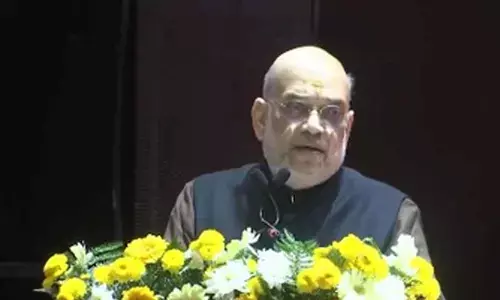Time-tested wisdom

"Kalyate Sankhyaayate Anena Kaalaha, Kala Sankhane/Kaalayati Prerayati Naa Kaalaha/Samyagate Samayaha Aayagatau"
It means:
Time is the one which is calculated thus, results in inspiration /leads to, very well known and which keeps people engaged and that which lends joys and sorrows.
In essence that is what time is all about. Our ancestors have long ago discovered the yardstick for such time on the basis of the movement of the Sun and on the position of the stars, they fixed the directions. It is said that the Solar Calender was evolved some 4,000 years ago.
Modern method – or Western method – of calculating time is well known to us and we follow it in our daily routine. Second, minute, hour, days and night, day, week, fortnight, month, year including theleap year etc.
Yugas:
Puranas say we have four Yugas: Krita, Treta, Dwapara and Kali.
Grahas are nine. Orbital distances of these and their disective points of the path of Sun are important in calculating time as per our science. When all these are in line with Ashwini Nakshatra, our time begins and from here we begin the cycle.
As our ancient masters knew perfectly the orbital paths of all these Grahas and caculated the time they take for a rotation based on the mean time to derive a "Kalpakam".This is equivalent to 432 crores of solar years. It means if a 'Kalpakam' begins with all planets conjoining Ashwini Nakshatra, it shall be the same in the beginning of the next 'Kalpakam' – it is not a linear calculation of time, but a sidereal one.
A 1000th part of Kalpakam (which is 43,20,000 years) is said to be a 'Maha Yuga". Again this is divided into four yugas as mentined above. Of this, a tenth of the Maha yuga, forms Kali Yuga (4,32,000 years).
Dwapara Yuga is two times of kali Yuga, three times of it is Treta Yuga and four times of Kali Yuga is Krita yuga. So, all these four Yugas put together form one Maha Yuga.
Seventy one such Maha Yugas form one Manvantaram, 14 such Manvantarams form one Kalpakam.
For Lord Brihma (Prakriti) one such Kalpakam is equivalent to a day and another one is his night. As we saw earlier one such Kalpakam is 432 crore years so the beginning to end that many years pass by in a Kalpakam. It also means that the time lapsing between two Kalpakams is 432 crore years. Whoever could calculate time cycle of such length except our ancestors.
The clock for us is thus: 18 Nimeshas is one Kashta, thirty of which for one Kala and whose thirty together form a Kshana, 12 of which form one Muhurta and thirty such Muhurtams go into the making of an Ahoratra (which is a day and night). 15 such days make a Paksha and two Pakshas, a Masa, two Masas one Ritu, three Ritus one Aayana and two such a Samvatsara.
Mankind's Masa is one Ahoratram of our elders who have departed (Shukla Paksha is the day and Krishna Paksha is the night).
Our one Samvatsara is one Ahoratram for Devatas and our 360 samvatsarams is equivalent to their one Samvatsaram.
If 12,000 such samvatsarams pass by it makes a Yuga for the Devatas and such 1000 Yugas is Lord Brihma's one Ahoratra Adi Brihma. This euqals two Kalpams of mankind.
Foiur yugas make up for one Kalpam with Krita yuga lasting for 17 lakh and 28,000 years (samvatsaram) of ours while Treta Yuga equals 12,96,000 years and Dwapara constitutes 8,64,000 years and Kaliyuga extends to 4,32,000 years (this is one day for Lord Brihma).
Such, as said earlier, 71 Deva Yugas make up for a Manvantaram. It means the advent of another Manu. Samvartamu, Pralayamu, Kalpamu, Kshyamu and Kalpaastamu are the names of Pralaya Kala.
MASAM (Month)
According to our calculations whichever Nakshatra is in conjunction with 'Pournami" the month will be known after it. Hence we Chitra Nakshtra's Chaitra Masa, Vishakha Nakshtra's Vaishaka Masa, Jyeshtha Nakshatra's, Jyestha Masa and so on and so forth (Ashadha, Sravana, Bhadrapada, Ashwayuja, Kartika, Mrigasira, Pushya, Magha and Phalguni have all got their names because of the Nakshatras) (Ashwini constitues Ashwayuja and Krittika forms the Kartika in this).
Generally, a month of the Indian calender has 28 days. The remaining period of all such months is put together and calculated as 'Adhika Masam".
Now let us look at the Western calender we keep:
Till a few years ago March was the beginning month for the calender. April and May are the names of their celestial beings. June, July and August are the names of emperors, September, October and November and December are how they call the number 7,8,9,10. January and Feburary round it off. Even here, they do not have any uniformity and 28/29, 30 or 31 days in a month.
This should explain whose calender is more scientific and systematic and well calculated.
RITU
A ritu means that which lives. We have considered all seasons in naming them as such. Hence we the Vasantha Ritu, the beginning with Chaitra and Visakha Masas, the hot month of Jyestha and Ashadha are known as Greeshma ritu, the rainy season of Sharavana and Bhadrapada as Varsha Ritu, the ones that cleanse the mud during Ashwayuja and Kartika Masams as Sharad Ritu, mistyr months of Margasira and Pushya known as Hemantha Ritu and the period that leaves all these Ritus, when the leaves are shed by the trees, Sishira Ritu.
AYANAS
When the Northern movement of the Sun is called Uttarayana and the period he embarks on his Southward Journey is known as Dakshina ayana. We have based our time thus on the movement of the ever expanding universe and its planets and stars because we are nature lovers.
Samvatsara
For our daily needs, we have divised our years based on Lunar calender. We have created a 60 years cycle with Prabhava, Vibhava, Shukla etc. Five such years make up for an ordinary yuga for us (Samvatsaram, Parivatsaram, Idavatsaram, Anuvatsaram and Idvatsaram are the parts of it). It means 60 years is broken down to 12 yugas. These 60 years are the Kalachakra and it is cyclical. Each such Yua has a Devata ruling it.
















